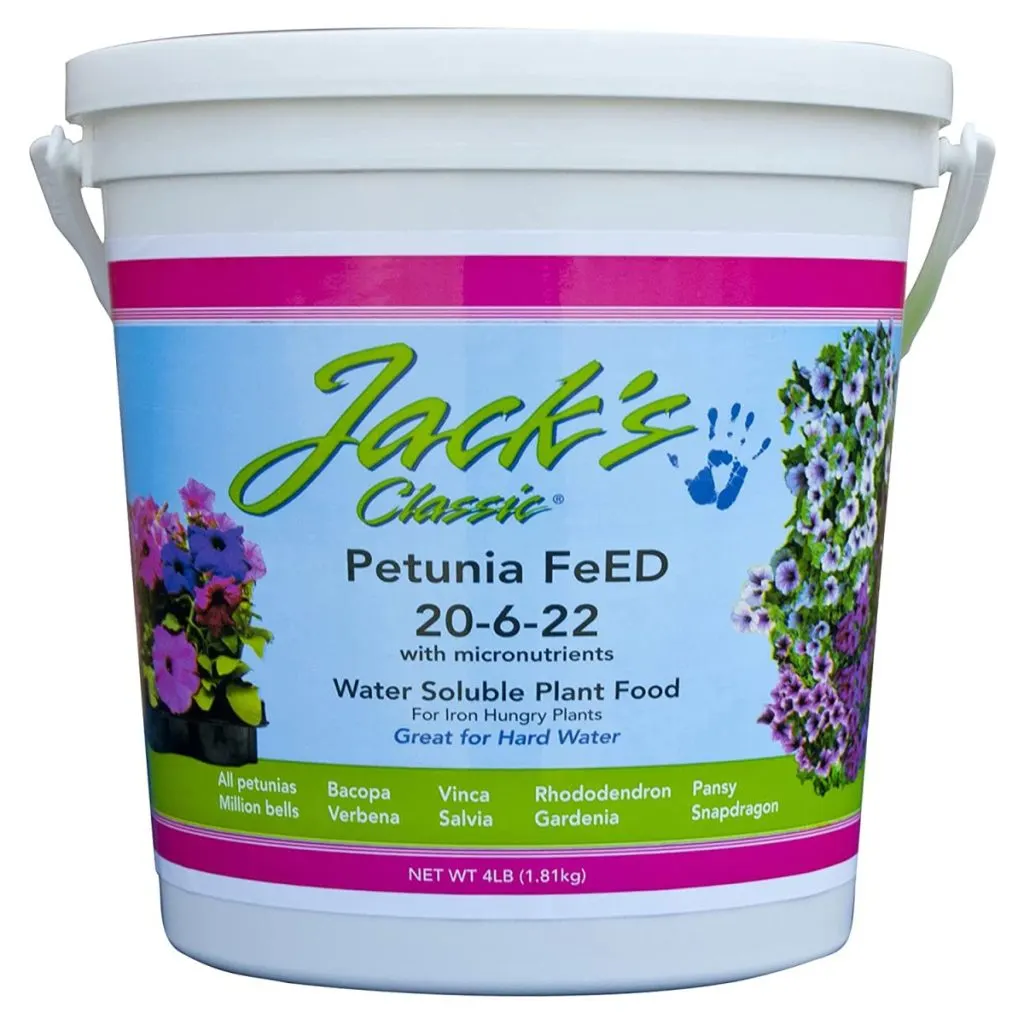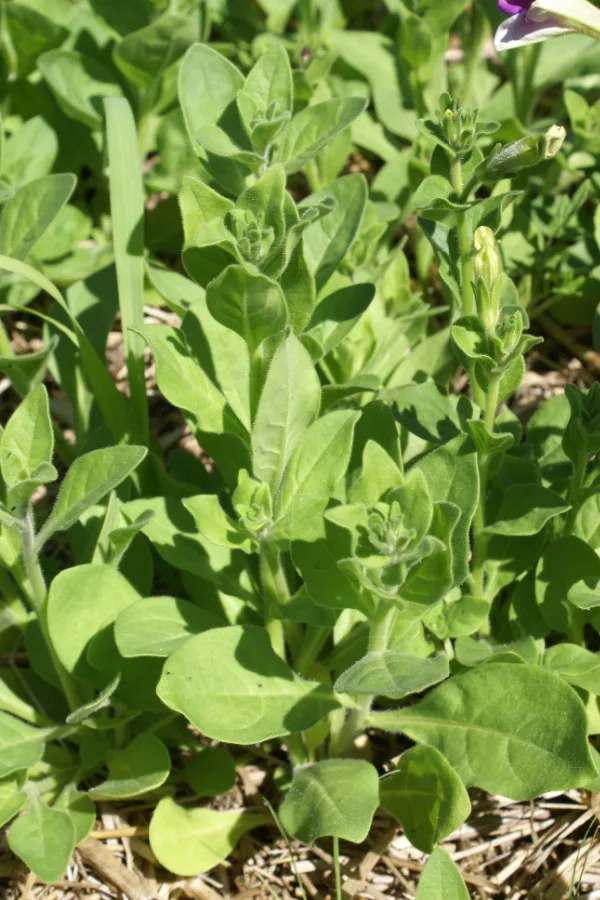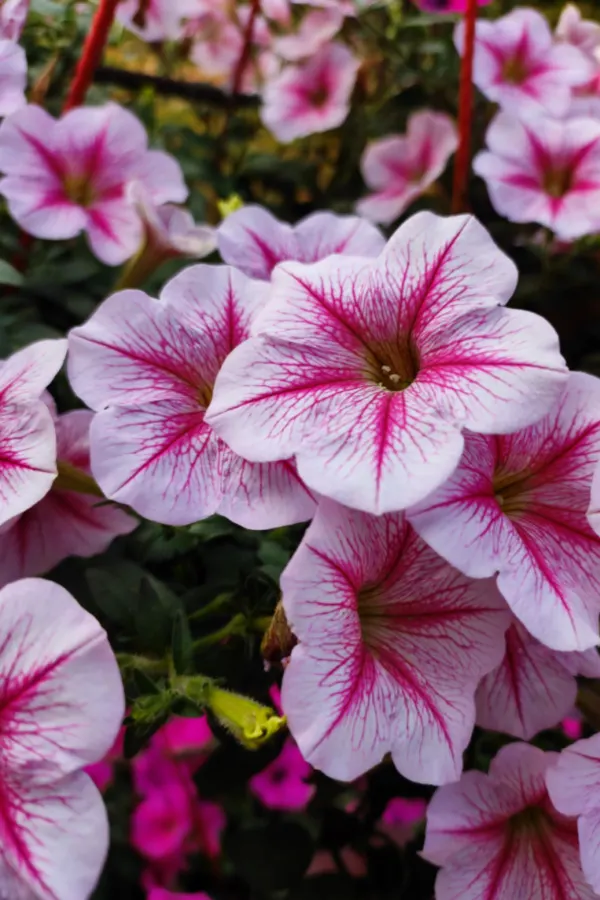When it comes to fertilizing petunias in the summer – the secret to success is giving these sun loving plants exactly what they need to stay vibrant, healthy – and most important of all – blooming big and strong all the way until late fall!
Petunias are one of the most popular if not THE most popular flowering annuals of all. Not only are they incredible to plant in flowerbeds and raised beds, they also happen to be one of the best annuals for potting up in hanging baskets and containers.
One thing is for sure, when they are healthy and in full bloom they add magnificent color wherever they grow. It’s one of the reasons we use them all over the farm to add huge splashes of color. But if there is one drawback for many gardeners when it comes to petunias – it’s getting them to keep on blooming strong once the middle of summer arrives.

All too often, as the hot summer season arrives, petunias begin to fade. Especially petunia plants that are growing in containers and hanging baskets. And more often than not – the culprit is they have simply run out of the energy they need to bloom.
The good news? It’s an easy issue to fix with a simple remedy. In fact, all you need to do is feed your petunias with the right kind of fertilizer, in the right dose – and on a regular basis. And here is exactly how to do just that!
The Secret To Fertilizing Petunias – How To Keep Petunias Blooming Big In The Summer!
One of the biggest mistakes gardeners make when feeding petunias (and nearly all flowering annuals) is giving them the wrong type of nutrients. Especially in the summer when they are trying to keep their petunias flowering.
Unfortunately, many of the fertilizers on the market contain only high amounts of nitrogen. Nitrogen certainly is important for growth – and it is also important for maintaining healthy green stems and foliage.
But once plants have reached full maturity, too much nitrogen is actually detrimental to annual flowers. Why? Because for starters, excessive nitrogen will cause plants to only grow more stems and leaves – at the expense of setting blooms and flowering.
Even worse, too much nitrogen for potted petunias will cause the roots of the plants to prematurely outgrow their container and become root bound. And once a plant is root bound, if it’s not replanted, it will struggle to survive.
So what is the best fertilizer to feed petunias to keep them flowering? It actually comes down to selecting a water soluble fertilizer that still has plenty of nitrogen, but also packs a good dose of potassium too!
Giving Petunias What They Need To Flower – How To Fertilize Petunias
Once late spring and summer arrive, petunias need to be fed with a fertilizer that has equal or near equal amounts of nitrogen and potassium – along with a lesser amount of phosphorous. This is actually different than many other annual flowers and even vegetable plants that need higher doses of phosphorous in the summer to get them to flower bigger and better.
While it’s true that phosphorous promotes more blooming in most annual plants, it’s actually potassium that is more important for petunias. Potassium helps petunias with overall health. This includes root health, disease resistance and the ability to distribute water and nutrients. And it’s that distribution that keeps petunias blooming steady and strong.

Petunias still need to have some phosphorous, but it can be much lower than the nitrogen and potassium levels. When feeding petunias in the summer, look for a fertilizer that has double to triple the amount of nitrogen and potassium to phosphorous. Affiliate Product Link: Jack’s Classic Petunia Feed Liquid Fertilizer
Why Liquid Fertilizer Is Best – How To Fertilize Petunias
So why is selecting a water soluble fertilizer best for petunias? In short, it’s because of how quickly and efficiently it can keep your plants powered up.
Liquid fertilizer absorbs both through the leaves and roots of a plant. In addition, unlike granular fertilizers that take time to break down, liquid fertilizer is almost instant. That means plants can get power quickly and stay powered with regular feedings.
Even better, with liquid feedings, you can easily control the strength of the dose. This allows you to give your petunias more frequent feedings by feeding them a weaker mix.
For petunias, that means diluting the recommended dose in half but feeding every seven days instead of every two weeks. This low and slow feeding will keep your petunias healthy, vibrant – and most importantly blooming strong and steady.
This one simple tip of low but frequent feedings really is the secret to success. It’s something we have been doing at the farm for years to always keep our petunias in full bloom right up until late fall!

Additional Key Factors To Keep Petunias Blooming
In addition to proper fertilizing, there are two other critical factors when it comes to keeping your petunias healthy through the summer months. The first is proper watering – and the second is deadheading your plants on a regular basis.
Petunias need at least 1 to 2 inches of water per week. And – even more if they are growing in pots or hanging baskets. Keep your watering consistent, not allowing the roots of your plants to dry too far out between waterings.
When roots dry completely out, it causes them to shrivel. That in turn makes it nearly impossible for the plant to take in water or nutrients. Once petunias get too dry, it can be hard to bring them back. And even if you do, the stress leaves them far more vulnerable to dying off.
Deadheading Regularly – How To Fertilize Petunias For Big Blooms All Summer
Deadheading, which is simply removing the spent blooms and seed heads from your plants as the blooms die off, is extremely important to keep petunias flowering.
Even though the blooms are dying off, the plant still burns energy on them. The more old flowers that remain, the less power the plant has to create new ones. Aim to deadhead your plants at least twice a week. The more you do – the more you make way for new buds and big blooms all summer long!
Here is to fertilizing your petunias this summer to keep them full of color right up to late fall! Happy Gardening – Jim and Mary
Old World Garden
Jim and Mary Competti have been writing gardening, DIY and recipe articles and books for over 15 years from their 46 acre Ohio farm. The two are frequent speakers on all things gardening and love to travel in their spare time.
As always, feel free to email us at thefarm@owgarden.com with comments, questions, or to simply say hello! You can sign up for our free email list in the subscribe now box in the middle of this article. Follow us on Facebook here : OWG Facebook. This article may contain affiliate links.


